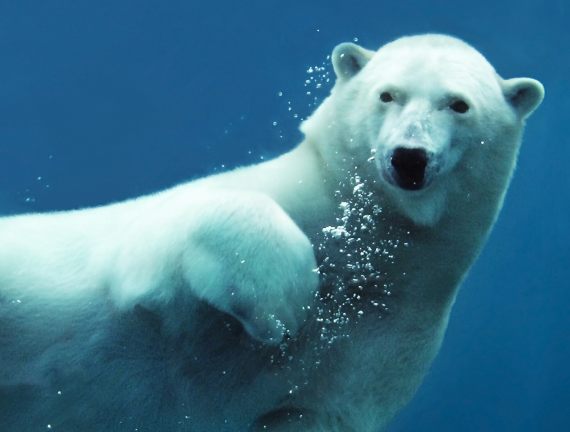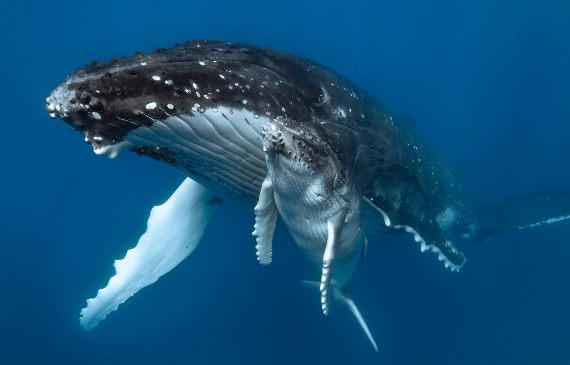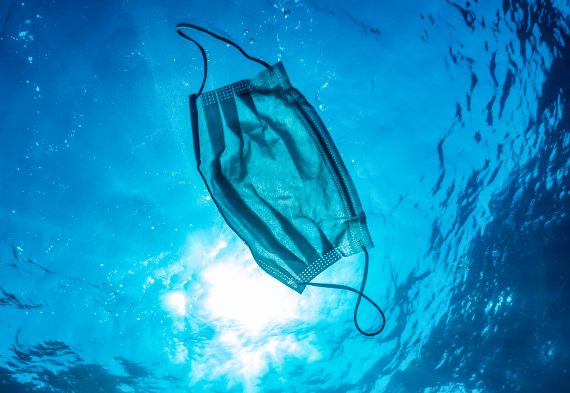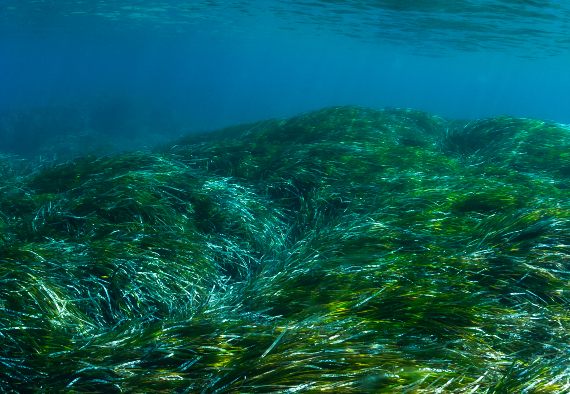Interview with Carlos M. Duarte Holder of the Tarek Ahmed Juffali Research Chair in Red Sea Ecology, King Abdullah University of Science and Technology, Saudi Arabia; BBVA Foundation Frontiers of Knowledge Award and BBVA OpenMind author.
2021 has kicked off the UN’s Decade of Ocean Science for Sustainable Development. Why is it so important to pay attention to the oceans right now and why haven’t we done it before?
Actually the question is why haven’t we done it before, not why are we doing it now. The oceans have been largely forgotten. In the Code of Justinian, which is the first Roman law code, from which most of the codes of the Western world are derived, the sea is defined as terra nullius, that is, no man’s land. The sea is that open area that belongs to no one and everyone, and therefore to which no attention has been paid. Since it belonged to no one, there was no one to take care of it either.
Other cultures, which have not followed Roman law, have a different relationship with the sea. For example, Australian Aboriginal cultures do not understand that there is a difference between the treatment of dry land and the sea.
Proof of the extent to which we have forgotten about the ocean is, for example, the landing a few weeks ago of the Perseverance robot on the surface of Mars. It is the most sophisticated robot ever produced by the human species in our history. Three minutes after its landing, the high-resolution panoramic images it generated were already being distributed on the Internet.

On the other hand, there is a distance of 470 million kilometers between Earth and Mars, and yet in the ocean, where the vertical distance from the seabed to the surface is no more than four kilometers on average, we have not been able to transmit an image without a vehicle connected to the surface with a cable. The difference in technological ambition in space exploration and ocean exploration is abysmal, and the gap is widening.
The ocean is a very significant contributor to our economy, and it is becoming more and more so. The GDP generated by the ocean is increasing at a rate of two to three times that generated by activities that occur on land, and the burden on our economy and on our jobs is growing.
150 years ago Jules Verne wrote his novel ‘Twenty Thousand Leagues Under the Sea’, in which he envisioned the submarine Nautilus, a sustainable vehicle that generated energy from the hydrolysis of seawater. It also explored and utilized the ocean’s resources in a sustainable way. 150 years later, we have still made absolutely no progress in that direction, if anything we have depleted the oceans. In fact, the first scientific paper on the hydrolysis of seawater as an energy source that Jules Verne had envisioned was published last year.
Can the blue economy serve as a lever to restore ecosystems and rescue them while learning to exploit them in a more sustainable way?
Yes, it is a lever that has been used for years, but it has a risk. That risk is to believe that this economic or monetary valuation of the benefits derived from the ocean and its ecosystems is an absolute and accurate valuation.
By way of example: in ecological or ecosystem economics, there are valuation systems that are capable of calculating a value, in terms of thousands of euros, of the benefits that a certain ecosystem derives in society. Let’s imagine that we send a team of scientists working on the valuation of ecological services of the sea to a very small ecosystem in Spain: the Estany des Peix, a very small coastal lagoon of about 500 meters in diameter, in Formentera.

EcteinascidiaTurbinata, the marine tunicate from which Spanish anticancer drug Yolendis is extracted
And then we ask this research team to assess what is the monetary contribution of the ecological values of the Estany des Peix. They would probably say that this ecosystem serves as a breeding area for species, which are then of commercial interest and somehow feed the local fishmongers of Formentera and Ibiza. In addition, there are underwater grasslands of a plant, which also helps to capture carbon, and perhaps they can find some other use. In this valuation exercise they would reach an amount of tens of thousands of euros per year, which would be the ecological value of the lagoon.
But if we had not told them before, they would never have noticed some rocks at the entrance of the Estany des Peix. In those rocks there is a hydrozoan, measuring a few millimeters, which produces a natural substance that is marketed under the name of Yondelis, a drug to fight cancer whose annual net profits amount to more than 100 million dollars a year. And there is also another small animal that generates a compound that is showing promising results in the fight against COVID-19. Many people had no idea about this. The question is: how many Yondelis will there be in bacteria, animals or sponges in Estany des Peix, of which we have no idea? How are we then able to give an economic value to that ecosystem and, sometimes, use that value to make decisions about whether it is worth preserving or destroying it, without having a minimally reasonable idea of what the benefits are?
Our cost benefit considerations are in their earliest infancy and yet we are using these considerations to make decisions that sometimes result in the loss of ecosystems.
What are the main environmental challenges facing marine ecosystems right now?
First of all, I think it is important to clarify that the state of the oceans is not as bad or as negative or hopeless as it is often portrayed in the media and scientific journals. Twenty years ago, the trends were overwhelmingly negative. However, last year I published an article in the journal ‘Nature’ entitled ‘Rebuilding Marine Life’, in which, together with my co-authors, I provided scientific evidence showing how policies that had been adopted in the 80s, 90s and at the beginning of this century were beginning to show positive results, in terms of many vectors of marine life recovery and marine environmental quality. Results that we would not be able to grasp if we only read press headlines or scientific articles. We concluded in this article that it is possible, although very difficult, to regenerate the abundance of life in the ocean by the year 2050.

This is where we found a series of actions to be taken: first of all, spaces must be protected. Today, almost 10% of the entire surface of the oceans is protected, or at least covered by some form of protection, although in some cases these declarations have not been converted into real protection, but are still in the implementation phase. Then there is the need to protect species. Right now the work that has been done to protect species in the ocean and to protect species through the protection of areas has increased significantly. Third, we have to reduce pollution. Here we have made remarkable progress. For example, not many people know, because we have published it in scientific journals without making the public aware of it, that in the 1970s the United States banned fuels with lead catalysts because of the human health impacts in cities. This policy of withdrawing leaded fuels has continued and spread throughout the world. This change of fuels, whose raison d’être was to stop producing human health impacts in cities, resulted in us obtaining samples of lead concentrations in the entire ocean for the first time on a global scale, during the Malaspina expedition that I led a decade ago, and we were able to demonstrate how these policies of withdrawing fuels with lead catalysts had led to the levels of this element in the ocean returning to baseline levels. Without intending to, because its basis was not to recover the oceans, that policy had generated a recovery with a global impact.
And we have also had similar successes in containing other pollutants that were generating major impacts in the ocean. There are still many others that we have not been able to displace, but there have been important victories. For example, in 1978, the humpback whale population in the world was around 200 or 300 specimens, that is, it was doomed to extinction and, however, thanks to the international whaling commission’s moratorium on whaling, there are now more than 60,000 humpback whales in the ocean and the population continues to grow. We are talking about one of the largest animals on the planet and the fact that we have been able to recover that population, when it seemed that it was doomed to extinction. It should encourage and empower us in our conviction that we can solve problems in the ocean.

And this also includes plastics. The problem of plastics has resonated with the public at large because it is something that we all can understand and see. We can see it in the water and on the beach. It is very tangible. If we were to triage ocean problems to focus on the most urgent ones, plastics would rank in fifth, sixth or seventh place. It is not among the three most pressing issues, but it is a form of pollution that we have not been able to phase out and that has indeed worsened with COVID-19. In 2020, plastic production was expected to drop by 15% as a result of policies banning single-use plastics. But it has increased by almost 20%, with gloves, masks, sanitary protection equipment, etc., so there has been a significant increase in plastic trash entering the sea. In addition, it is a hazardous waste as it is potentially contaminated by COVID-19.
We also have to harvest the oceans in an intelligent and prudent way, we have to rethink our whole approach to fishing: regulate it in such a way that there is no more illegal fishing. And in this sense, let’s say that 99 percent of shipowners in our country behave according to the rules and become key players in the quest to ensure the sustainability of fishing, but we have some black sheep that everybody knows about throughout the industry, which not only represent a threat to ocean life, but to the entire reputation of Spain’s fishing fleet. Illegal fishing is an important problem that we should solve not only through policies, but also through education, because it is a resource that has a negative impact on everyone.
And finally, the new problem is climate change, which is an overarching challenge that is already significantly affecting the ocean, especially polar ecosystems in the Arctic and coral reefs. In these two areas, the Arctic and the tropics with coral reefs, it will be very difficult to avoid, even if we meet the goals of the Paris Agreement, these impacts from affecting polar marine ecosystems and ice-dependent organisms and tropical corals more than they already have.

In these cases, recovery will be difficult. In the case of the Arctic, impossible, because we are not going to see the Arctic ice recover in human generations. However, in the case of coral reefs we should not resign ourselves to the negative forecasts and we should develop new scientific and technological foundations that will allow restoring coral reefs. An achievable, but daunting nonetheless, endeavor, undoubtedly worth the effort.
In the ocean it is possible, not so much on land. We still have that opportunity in the ocean, but it won’t be there forever. Either we do it in the next ten years or the opportunity will vanish.
What role does the ocean play in helping us regulate the atmospheric CO2 concentrations? Can you explain what blue carbon is?
For almost 40 years, there have been policies targeted towards the possibility of acting on the conservation and reforestation of tropical forests, and forests in general, as a way to prevent or mitigate climate change. However, there were no ocean-related policies. There wasn’t even a basic understanding of how the ocean can support policies that result in climate action. About 30 years ago, I started publishing the results of my research, which indicated that ecosystems in the coastal zones, such as seagrass meadows, mangroves, marshes and kelp forests, had an enormous capacity to produce more organic matter than they consumed and therefore were capable of sequestering very significant amounts of carbon. We scaled these results globally and, in 2005, my collaborators and I demonstrated that these ecosystems, which cover less than 0.2 percent of the ocean surface, are responsible for more than half of all carbon sequestration that occurs in marine sediments or sea floors.
The result led to the formulation of a strategy that continues to grow unstoppably, which is the blue carbon strategy to mitigate climate change. The blue carbon concept refers to these coastal ecosystems which, in a healthy state, are capable of removing enormous amounts of carbon dioxide from the atmosphere and consolidating it in sediments and sea floors for thousands of years. The champion of this carbon sequestration are the ‘Posidonia oceanica’ seagrass meadows in the Mediterranean and if we had to crown a specific global carbon sequestration champion, it would be the ‘Posidonia’ meadows surrounding the Formentera and Ibiza islands, which are also a World Heritage Site. One hectare of underwater meadow sequesters as much carbon as 15 hectares of pristine Amazon forest.

The recognition of both these seagrass meadows and mangrove forests and marshes’ potential as a powerful carbon sink, has led to an increase in awareness levels concerning the importance of these ecosystems, and to the roll out of many projects across the globe focusing on preserving them and preventing their disappearance, because when seabed carbon deposits are lost, they become destabilized and can result in significant emissions.
And also, on reforesting them, because restoring mangrove ecosystems is relatively simple and cheap. For example, it has been done in the Mekong River delta in Vietnam, where more than 2,000 square kilometers of mangrove forest – destroyed during the war – were reforested using fairly basic methods and other mangroves were restored to a fully-functional state. In short, smart ocean management (preserving and restoring marine ecosystems) is one of the keys to solving the problem of climate change.
Comments on this publication